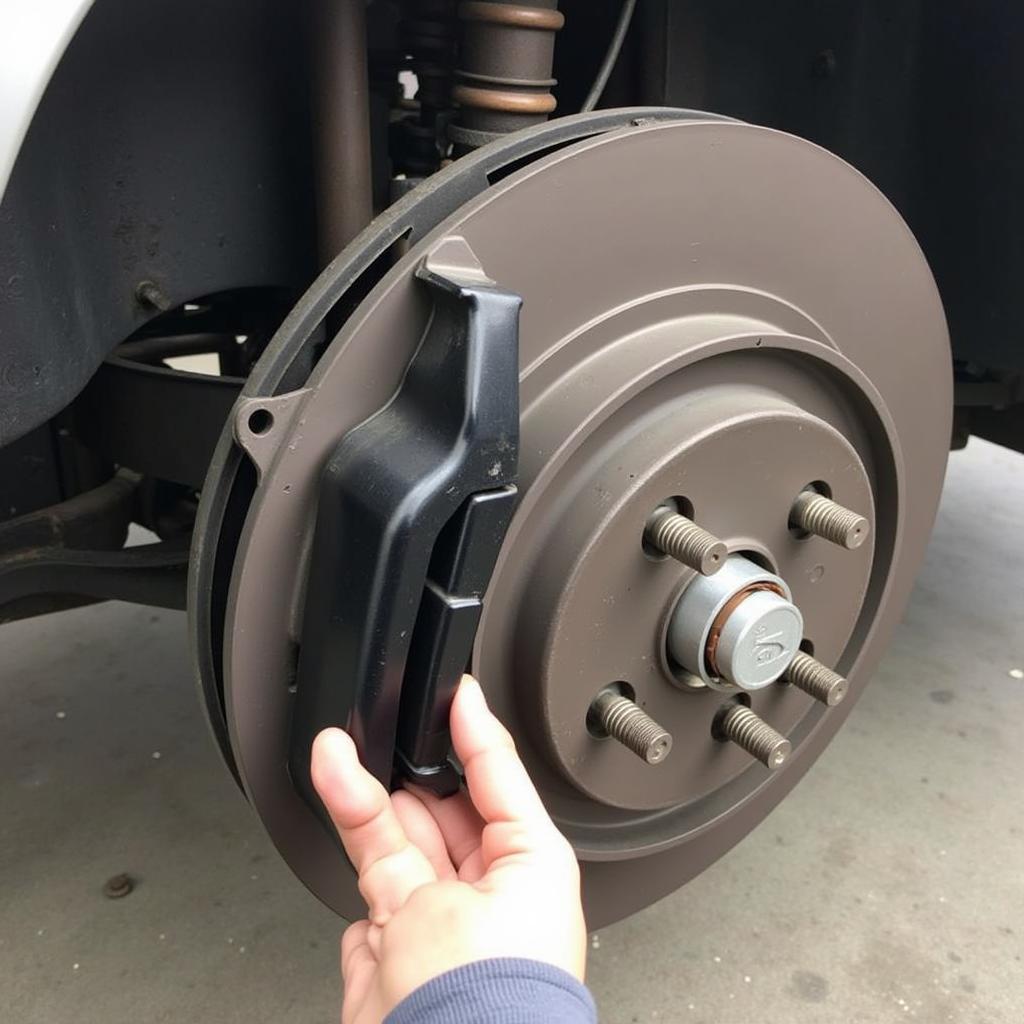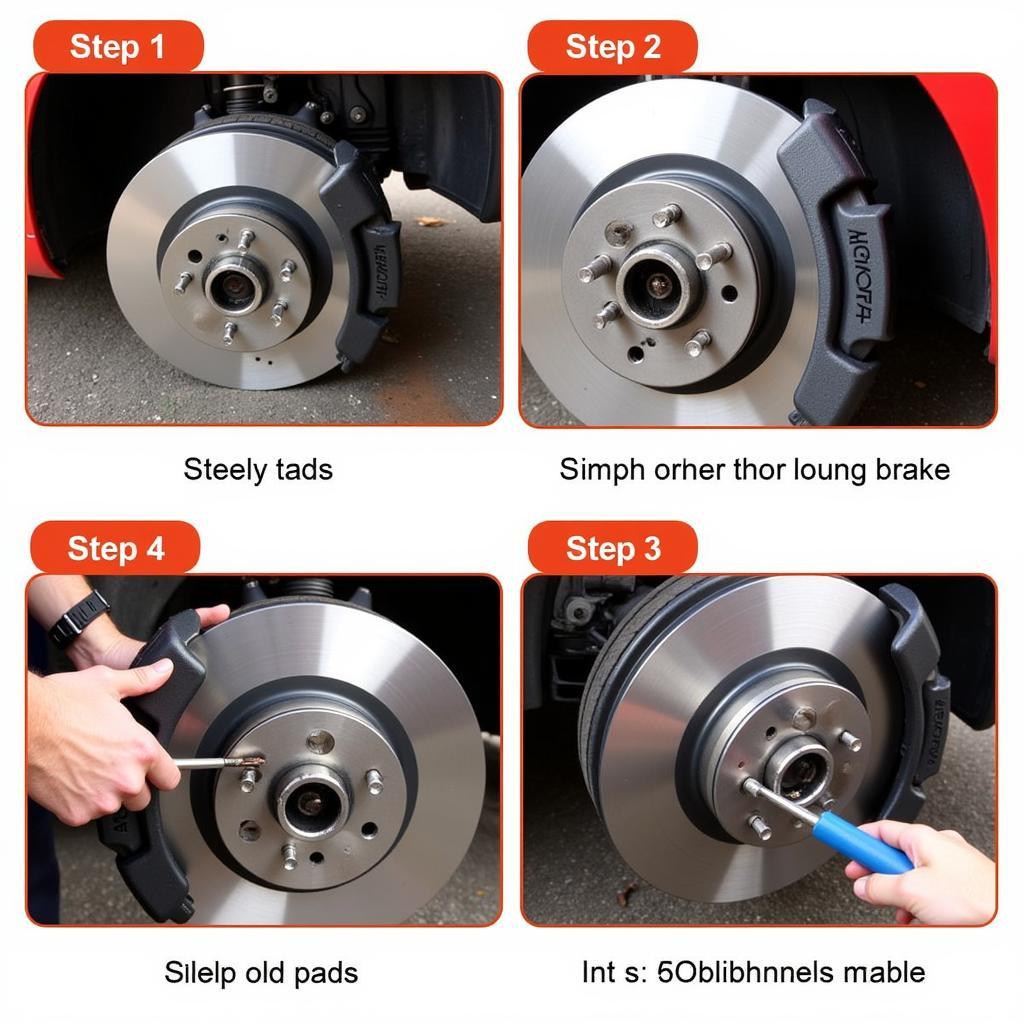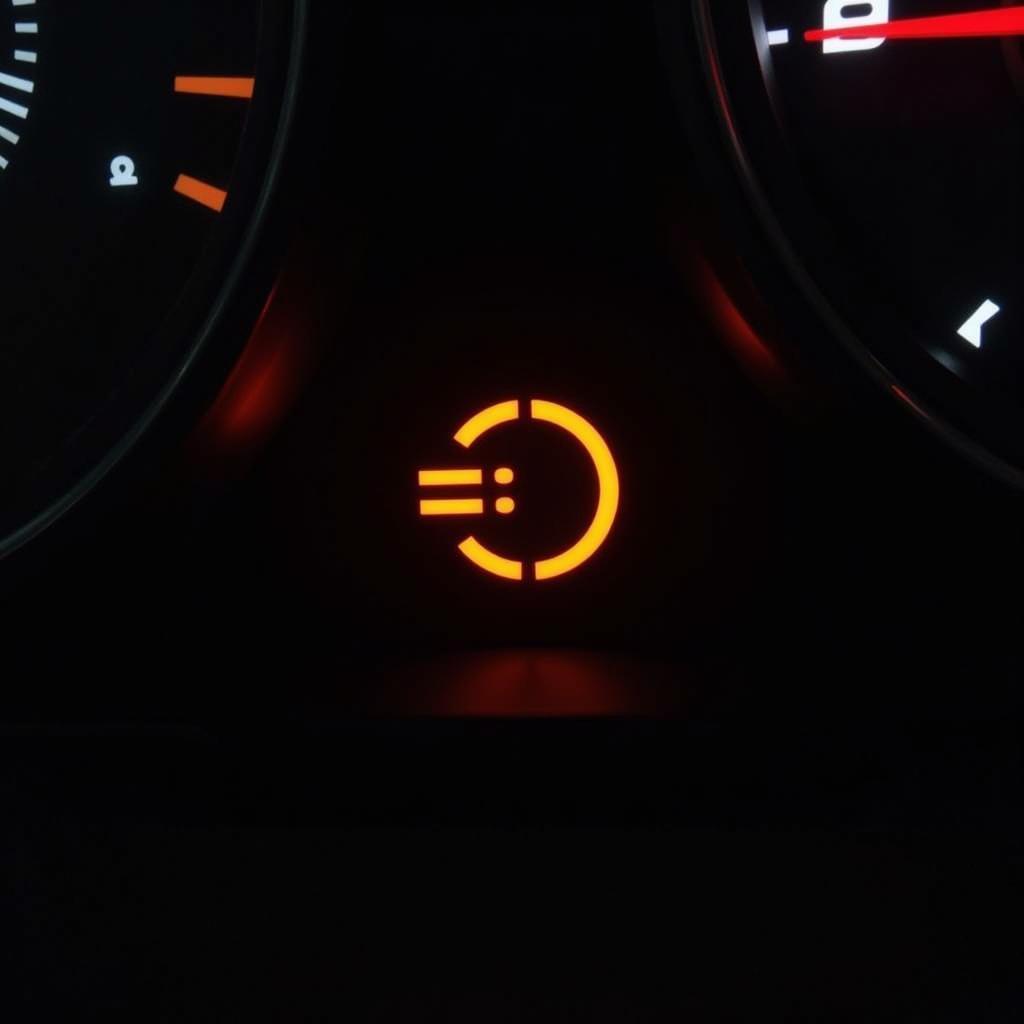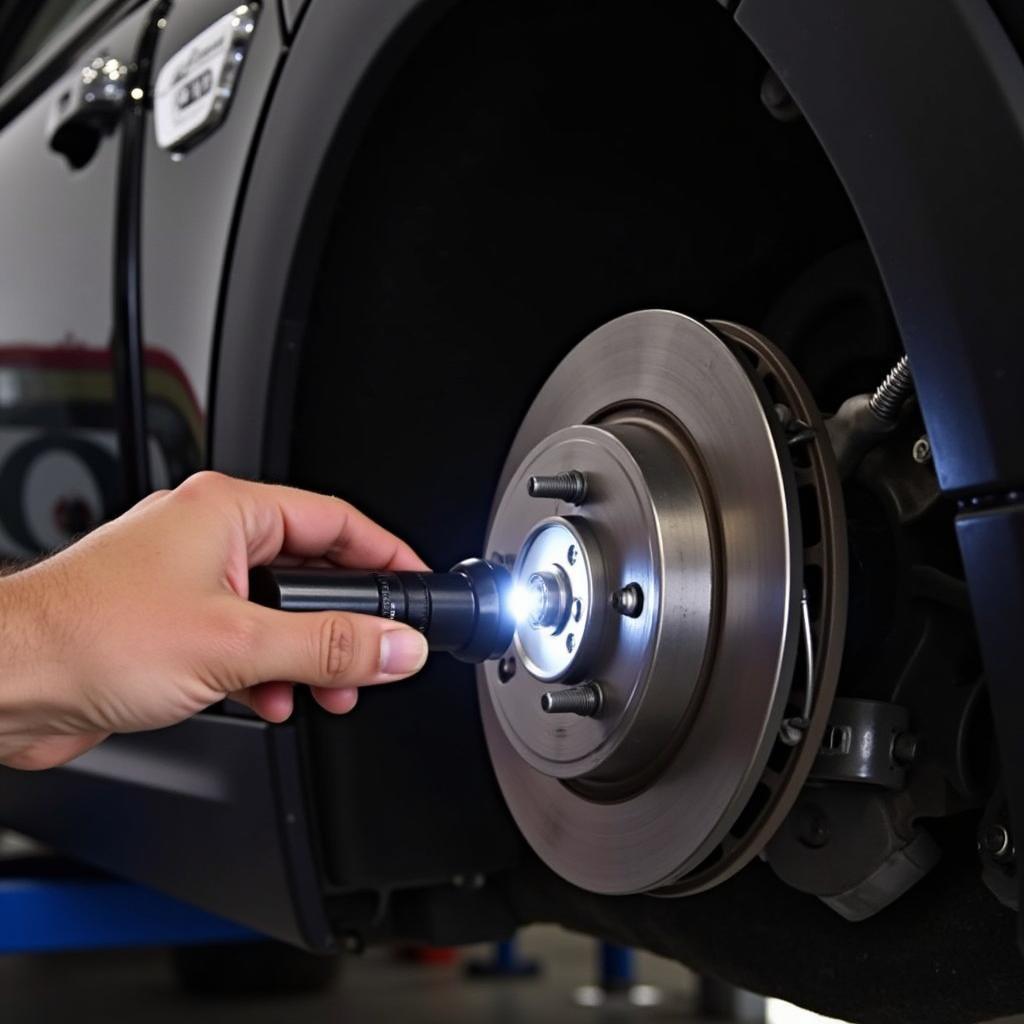Dealing with a jaguar brake pad warning can be unsettling. This guide provides expert advice on diagnosing, troubleshooting, and resolving brake pad issues in Jaguar vehicles, offering insights into the warning system, potential causes, and solutions.
The jaguar brake pad warning light is a crucial safety feature in your Jaguar, alerting you to potential issues with your braking system, specifically wear on your brake pads. Ignoring this warning can lead to further damage and compromise your safety. For Jaguar F-Pace owners experiencing this, check out our dedicated guide on the jaguar f pace brake pad warning light.
Understanding the Jaguar Brake Pad Warning System
Your Jaguar’s brake pad warning system is designed to alert you when the brake pads are nearing the end of their lifespan. This system uses sensors embedded within the brake pads themselves. When the pad material wears down to a certain point, these sensors trigger the warning light on your dashboard. While this system is generally reliable, it’s important to understand that other factors, such as faulty sensors or wiring issues, can also trigger the warning.
Diagnosing the Cause of the Warning
When the jaguar brake pad warning appears, the first step is to determine the actual cause. Is it genuinely worn brake pads, or is something else at play? Start by visually inspecting your brake pads. If they appear thin, it’s likely time for a replacement. However, if the pads look sufficient, there might be a problem with the sensor itself. A diagnostic scan can pinpoint the issue, whether it’s a faulty sensor, wiring problem, or indeed worn pads. This is where remote diagnostics and software solutions come into play. We can often identify and even fix these issues remotely, saving you time and money. Learn more about the warning light specifically for the Jaguar XE at jaguar xe brake pad warning light.
 Jaguar Brake Pad Sensor Location
Jaguar Brake Pad Sensor Location
Troubleshooting and Solutions
Once the cause of the jaguar brake pad warning is identified, appropriate action can be taken. If the brake pads are worn, they need to be replaced promptly. If the problem lies with the sensor, it can be replaced or repaired. Sometimes, the issue might be as simple as a loose connection or a software glitch. In these cases, remote programming and software updates can be implemented to rectify the problem without any physical intervention. For Jaguar XF owners, we have a specific guide addressing the low brake pad warning light: low brake pad warning light jaguar xf.
What if the warning light stays on after replacing the brake pads?
Sometimes, the warning light might persist even after new brake pads are installed. This could be due to a faulty sensor, incorrect installation, or a need for a system reset. In many modern Jaguars, the brake pad warning system requires a reset after pad replacement. This can often be done through diagnostic software, and we can often perform this reset remotely.
 Jaguar Brake Pad Replacement Process
Jaguar Brake Pad Replacement Process
How to prevent premature brake pad wear?
Adopting a smooth and anticipatory driving style can significantly extend the life of your brake pads. Avoid harsh braking and unnecessary acceleration. Regular maintenance, including brake inspections, is also crucial for preventing premature wear and tear.
“Regular brake inspections are crucial for catching potential issues early, even before the warning light comes on,” advises John Smith, Senior Automotive Diagnostic Technician at CarDiagTech. “This proactive approach can save you from more costly repairs down the line.”
Conclusion
Addressing the jaguar brake pad warning promptly is vital for maintaining your safety and preventing further damage to your braking system. Leveraging remote diagnostic, programming, and software solutions can often resolve these issues efficiently and cost-effectively. Don’t ignore the warning – take action to ensure your Jaguar’s braking system is in optimal condition. You can find more information on the general Jaguar brake pad warning light here: jaguar brake pad warning light.
“Using remote diagnostics allows us to quickly and accurately pinpoint the cause of the brake pad warning, often without the need for a physical inspection,” adds Emily Davis, Lead Software Engineer at CARDIAGTECH. “This saves our clients valuable time and money.”
FAQ
-
What does the jaguar brake pad warning light look like? Typically, it’s a yellow or red symbol resembling a circle with parentheses on either side.
-
Can I drive with the brake pad warning light on? While possible for short distances, it’s highly discouraged. Continued driving can damage the rotors and compromise braking performance.
-
How much does it cost to replace Jaguar brake pads? The cost varies depending on the model and whether you choose OEM or aftermarket parts.
-
How often should I replace my Jaguar brake pads? This depends on your driving habits and conditions. Generally, brake pads last between 30,000 and 70,000 miles.
-
Can I replace Jaguar brake pads myself? It’s possible, but requires mechanical skills and the proper tools.
-
What are the symptoms of worn brake pads besides the warning light? Squealing or grinding noises, vibrations in the brake pedal, and a longer stopping distance are all signs of worn brake pads.
-
What happens if I ignore the jaguar brake pad warning light for too long? Ignoring the warning can lead to severely damaged rotors, caliper damage, and potentially brake failure, posing a serious safety risk.


